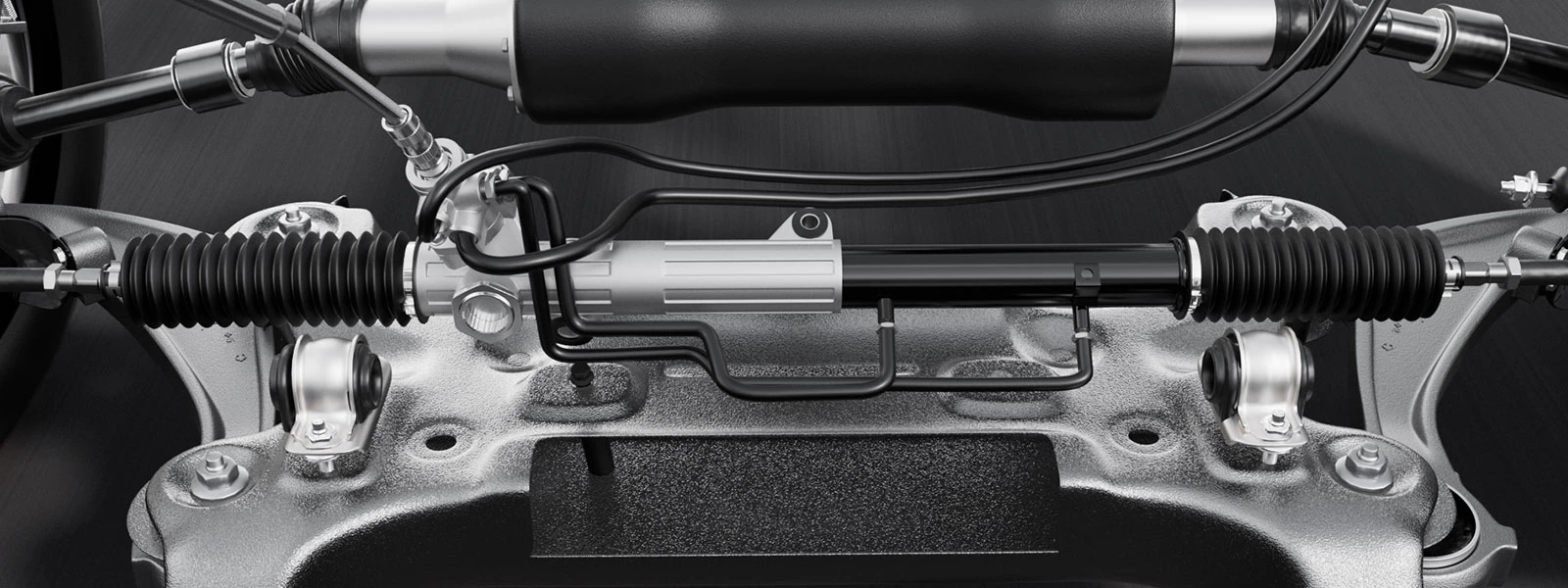How do you Reset the Power Steering Assist on Ford F150?

If your Ford F150's power steering assist system is malfunctioning, you may want to learn how to repair it. Ford F150 electric steering issues are a frequent source of consumer complaints. Instead of a standard hydraulic pump, the wheel is driven by a mot
If your Ford F150's power steering assist system is malfunctioning, you may want to learn how to repair it. Ford F150 electric steering issues are a frequent source of consumer complaints. Instead of a standard hydraulic pump, the wheel is driven by a motor. It is programmable and minimizes the effort required by drivers to spin the wheels.
Electric Steering Ford F150’s damaged wiring and misalignment of the rack contribute to its poor functionality. Occasionally, coding errors in software and electric control modules can create difficulties. Defective input sensors, such as angle and torque, also contribute to poor performance.
If the issue is not shown on your dashboard, you may attempt to reset the alert. Restarting the vehicle is the simplest method to reset the warning. This will reset the power steering pump system's related electrical components. Repeat this procedure twice or thrice. If the issue continues, you should have the system fixed at a Ford dealership.
To maintain the steering's long-term functionality, see the vehicle's handbook. Attempt to prevent any errors that contribute to its flaws. The following are some of the potential issues that may arise.

Why Does the Steering Assist Fault Occur
1951 was the first year when power steering was made widely available. It was a power steering pump system that was hydraulically operated. That was the Chrysler Imperial from 1951. After 50 years, this technology would still be relevant.
EPAS is the current name for the system we use. This signifies the usage of electric power to aid with steering. The hydraulic pump is still present, and hydraulic fluid is necessary for this to work correctly. However, this gadget utilizes an electrical pump to pressurize the liquid to aid in steering rather than absorbing the energy released by the engine.
When a wheel is spun, the electronic steering module identifies this by receiving information from torque and angle sensors. It reduces the amount of power assistance necessary while steering at high speeds since it controls the torque and rotation speed of the front wheel. A defective sensor may affect the vehicle's speed, power assist, and other systems, which might impact the steering. Immediately contact an expert if you have any cause to assume that your Ford F150 may have an issue with its steering assist.
A-Premium Suggested Parts
What Happens If the Electric Power Steering System Fails
Many issues with the Ford F150 power steering pump problems rack might lead to a loss of power steering. An electric motor, a specialized module, and a torque sensor comprise the bulk of the electric power steering system. Wiring and fuses provide electricity to these parts, which are then linked to the remainder of the vehicle. Damage to any of these parts will result in improper operation of the power steering pump problem, resulting in an unsteady vehicle. The electric power steering module also needs repair if it flashes a warning light. The parts of a power-assisted steering system vary depending on the model you have in your automobile. As a result, not all power-assisted steering systems will experience the issues we mention below.
The only method you can control your automobile's motion is by utilizing the steering. The car's engine and brakes are responsible for moving and stopping it. On the other hand, the steering keeps the vehicle in check. Thus, it demands extra care and good maintenance.

Malfunctions of the Electrical System
This is not connected to the hydraulics of the system. Whenever you find a circumstance where turning the wheel is considerably more challenging than expected, the electrical system can be the culprit. If your fluid levels are good but you're still experiencing this issue, it's possible that your electrical system is to blame.
The pressurized fluid is not used for turns when the electrical assist system, usually the electrical pump, fails. This makes the steering harsher as you aren’t receiving any help for your favors. An OBD 2 scanner is the quickest and most accurate tool for locating the problem. To pinpoint precisely which part is broken, follow these steps.
- If you do not have such a gadget, you must hunt to locate the possible issue.
- Examine the fuse box and the wires that go to the steering system for any problems.
- Look for anything out of the ordinary to see whether it's the root of the problem. If not, go on to the battery and verify its voltage of it.
If everything is in order, the code may result from a defect that hasn't been detected yet. Either the warning light or the power steering pump system's electronics are at blame, or it might be something else entirely.
Restart your vehicle two or three times to see if that helps. This will reset the warning light or could fix the issue. However, keep in mind that this is just a band-aid solution. You should get your vehicle inspected as soon as possible.
Run Out of Fluids
There must be hydraulic fluid present for the fluid-electric hybrid system to work. You run the danger of running out of steering fluid if you don't regularly fill it up.
A shortage of fluids and an incapacity of the hydraulic system to transfer energy to the wheels are potential reasons for steering that demands five times as much effort to turn as typical.
There is no time to waste if you suspect your fuel supply is running low. Checking the gas level in a chilly car is not recommended. To check the fluid levels, you must switch it on and let it warm up. If you don't do this, you won't be able to know how much fluid is genuinely in your car.
Driving with low fluids is not only challenging, but it could also destroy the power steering pump system's components. The fluid levels can be sorted out after you force your way through the drive if that makes sense. You may manage, but you might need to replace the complete steering system if you are uninformed.
How Do I Reset a Power Steering Assist Fault on a Ford
Checking your vehicle's electronic systems is the first and most fundamental step in diagnosing and fixing a problem with the power steering assist. It is recommended that you replace the steering column and gear if the warning light is still illuminated; however, it is unlikely that this would fix the issue. Utilizing a scan tool to hunt for diagnostic codes will be an intelligent choice. On occasion, a problem with the power steering assist might result in a vehicle that is immovable and unresponsive.
You must have your automobile checked out as soon as possible if you have any reason to believe its power steering assist system is malfunctioning. The failure of the steering system might be a severe risk to passengers' safety. This error message is an early warning system that should be investigated and fixed. Once you have identified the issue, you can take the required steps to address it.

How Can I Reset the Electric Power Steering Pump Problems on My Vehicle
If you have had issues with your Ford F150's power steering pump problems, you may need to learn how to reset the electronic power steering pump. This electrical system transmits information from the angle sensor and torque sensor to the power steering module (PSCM). When the angle sensor fails, the vehicle may lose equilibrium and flip. The issue may potentially stem from a broken electrical connection.
Restarting the vehicle may reset the fault codes and restore regular power steering pump problem operation. Sometimes, the issue is the steering rack, and a simple repair might save you a great deal of money in the long run. If not, you may attempt to replace it. This should hopefully address the problem. If this is not the case, you may need to replace the steering rack.
In rare instances, improper wiring might result in locked steering. Wires that are broken or damaged cannot transmit orders to other sensors. An expert programmer is an expert in electric circuitry. Broken wiring might interfere with the electric power steering pump; therefore, ensure that all wiring is replaced. You must also inspect the rack. It might be rusted or have a defective connection. Frequently, a blown fuse will prohibit the steering lights from functioning. If steering problems persist, you should take your vehicle to a nearby repair shop.

Conclusion
Power steering is essential to the safety of a vehicle's operation. The steering wheel is the sole controllable component of a vehicle. Even while the engine and brakes enable you to accelerate and decelerate, respectively, they do not keep the vehicle on the road.
There are three distinct kinds of power steering pump systems to consider. First is the hydraulic steering system from 1951. This pulls the power from the engine and transfers force using hydraulic fluid.
Following is the EPAS. This is an entirely battery-powered electric system. This is normal with newly made autos. We now own a hybrid system powered by a battery and transfer force via hydraulic fluid.
Various steering systems encounter issues that result in a power steering assist malfunction. Typically, the source of the problem is either a hydraulic fluid leak or an electrical error. Depending on the power steering pump problems, you must take appropriate action.
The trouble codes may be cleared simply by restarting the vehicle. However, you should not disregard the warning. The warning suggests an upcoming issue. Therefore, you must get your vehicle examined as soon as possible. Resetting the code will not remedy the situation. There is a good chance it may reappear shortly. If you continue to disregard it, you may lose your power steering.








